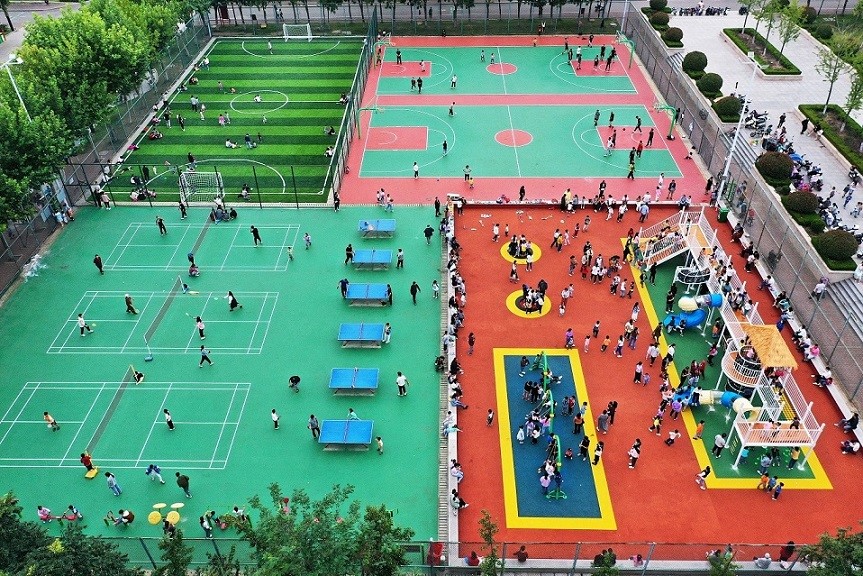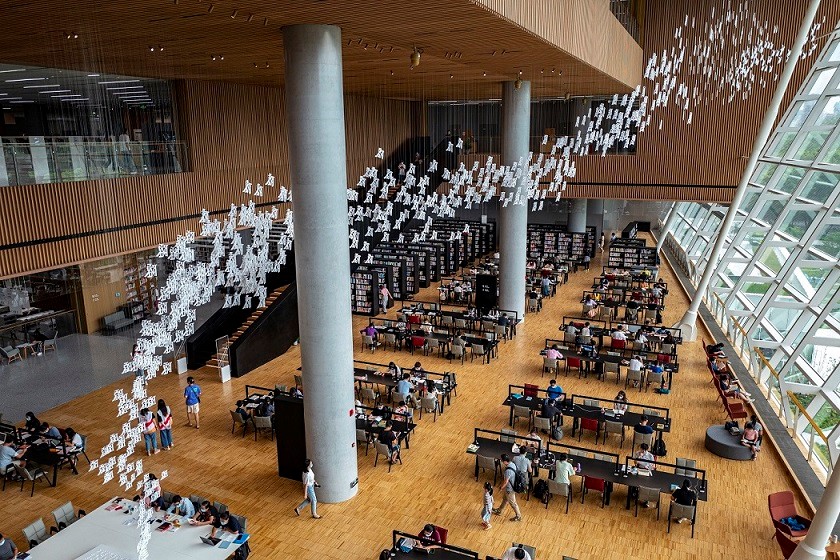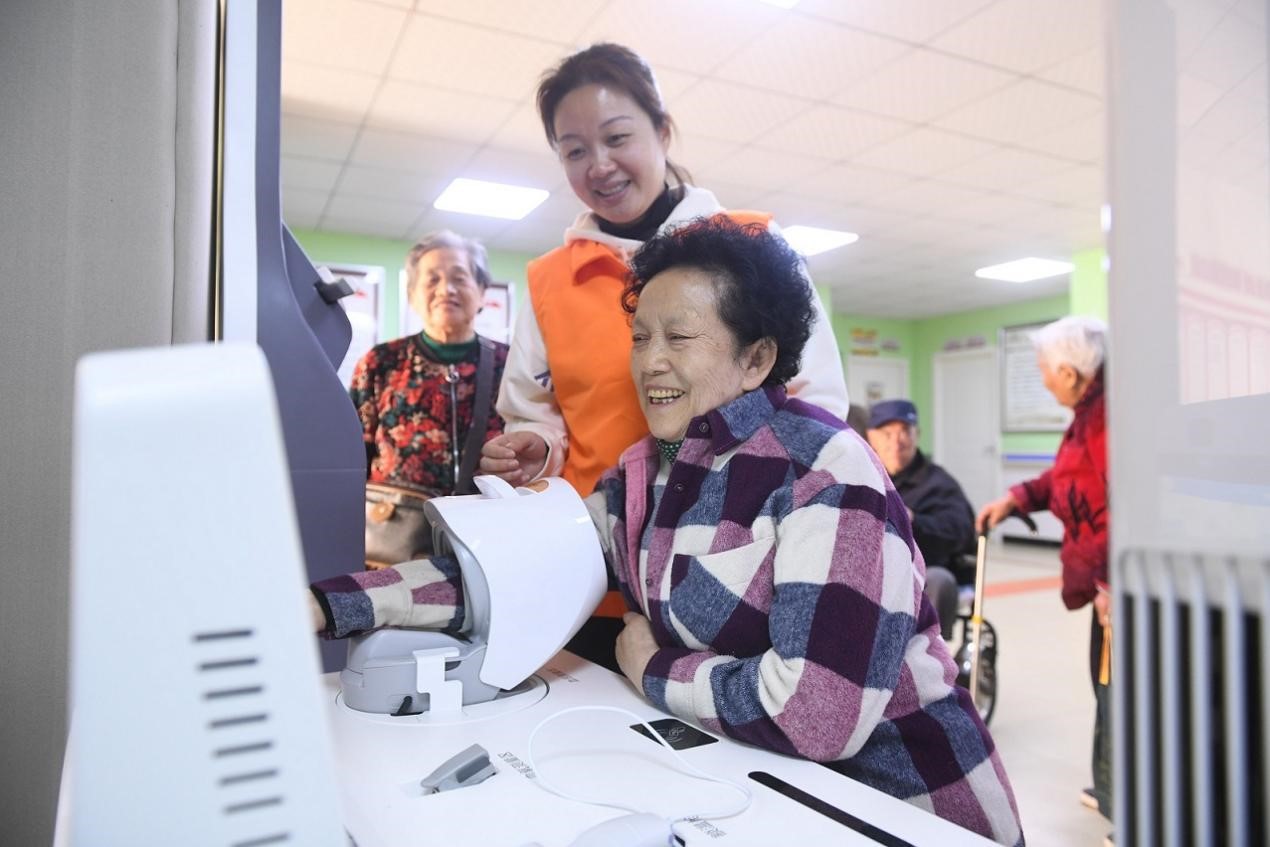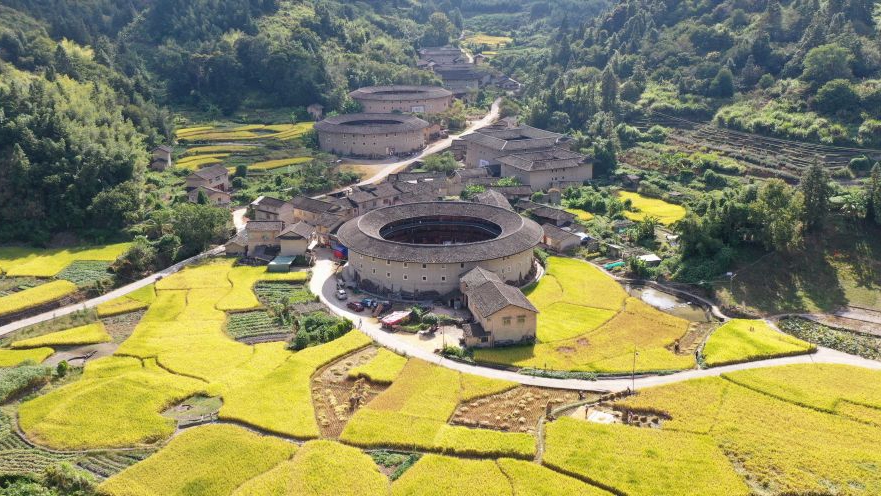China sees accelerated development of "happiness industry" over past decade
Over the past ten years, China has witnessed the rapid development of its tourism, culture, sports and health sectors, which are known together as the “happiness industry”.
During this period, the country has moved from the low human development category to the high human development category, with its Human Development Index jumping from 0.699 in 2012 to 0.761 in 2020.

Residents join sports activities in a community-based sports park in Shanting district, Zaozhuang, east China's Shandong province, September 2022. (People's Daily Online/Li Zongxian)
Empowered by digitalization, large numbers of new business forms in the culture sector have emerged in China. Cultural products launched by museums are sought after, becoming a new area of growth for consumption.
According to statistics released by the National Bureau of Statistics, the added value of China's cultural and relevant sectors hit around 4.5 trillion yuan ($630 billion) in 2020, accounting for 4.4 percent of the country's GDP, 0.6 percentage points higher than in 2014.
In particular, the added value of the cultural service sector stood at nearly 2.9 trillion yuan, or 64.2 percent of the total of all cultural and relevant sectors, 15.6 percentage points higher than that in 2014.
Online exhibitions, online performing, livestreaming and immersive experience programs are on a rise. Road trips, camping, winter tourism, health tourism and seaside tourism have become trendy in the country. Besides, the cultural sector and workshops of intangible cultural heritage are constantly driving rural vitalization and in-depth integration between the culture and tourism sectors.
The National Fitness Program, upgraded to a national strategy, has increased Chinese people’s enjoyment of sports.
In the just-ended week-long National Day holiday, many Chinese people participated in sports activities.

Citizens read books and study in the east hall of the Shanghai Library, September 2022. (People's Daily Online/Wang Chu)
The total output of China's sports industry exceeded 2.7 trillion yuan in 2020, and the added value of the industry neared 1.1 trillion yuan.
In particular, the sports service industry reported an output of 1.4 trillion yuan. Its added value was 737.4 billion million yuan, accounting for 68.7 percent of the total in the general sports industry.
Between 2013 and 2021, the average annual growth of sports enterprises above the designated size, or those reporting annual revenue of over 20 million yuan from their main businesses, reached 8.4 percent.
As of the end of 2021, there were 3.97 million sports venues in China, with a per capita sports area of 2.4 square meters.
Over the past 10 years, China has vigorously promoted education, culture, health, social security and other livelihood programs that are inclusive, general and guarantee basic needs, to improve people's sense of happiness.
The country's cultural and educational sectors embraced prosperous development. The retention rate of nine-year compulsory education and the gross enrollment ratio for high-school education were 95.4 percent and 91.4 percent in 2021, respectively, up 3.6 and 6.4 percentage points from the figures in 2012.
As of the end of 2021, there were 3,215 and 5,772 public libraries and museums across the country, up 139 and 2,703 from the end of 2012.
The country has made steady progress in building a healthy China. As of the end of 2021, the numbers of health organizations, hospital beds and health workers in China were 1.03 million, 9.45 million and 11.24 million, respectively, and the country's basic medical insurance covered over 1.3 billion people.

A senior woman has her blood pressure measured at a day-care nursing home under the instruction of a staff member in Lianchi community, Wenfeng neighborhood, Yingzhou district, Fuyang, east China's Anhui province, October 2021. (People's Daily Online/Wang Biao)
The country has accelerated the construction of its social service system for the aged. It has enhanced efforts to make its public facilities elderly-oriented and to better facilitate the transport for the senior group.
Over the past 10 years, China has built an elderly care service system that covers both rural and urban residents with an investment of nearly 30 billion yuan.
As of the end of 2021, China had a total of 340,000 nursing homes and other relevant facilities, whose number of beds had doubled from that in 2012. Community-based elderly care services were accessible to almost all communities across the country.
Efforts are being made to deal with the underdevelopment of elderly care services in rural areas, and all people living in dire poverty at the county level are covered by the country's relief and support system. There are currently over 130,000 mutual-aid elderly care facilities in China, providing entertainment, food, chronic disease treatment and other services to seniors. As of the end of 2021, the country's basic old-age insurance covered more than 1 billion people.
The speeding development of the happiness industry is constantly expanding people's access to elderly care, childcare, education and medical services.
As the country keeps deepening the supply-side structural reform in the public service sector and sees more equitable access to basic public services, new stories of the Chinese people's better lives are unfolding.
Photos
Related Stories
- Themed exhibition on China's great changes: Culture
- In pics: archaeological site of Shuomen ancient port in E China's Zhejiang
- U.S. university launches Helen Foster Snow Cultural Center to boost links with China
- Ageless China - Confidence
- BRICS cardiovascular health center inaugurated in China's Xiamen
- Chinese official calls for mutual learning between cultures
- Martial artist spreads traditional Chinese culture with creative videos
- Canal cultural festival kicks off in Beijing
- Chinese people getting taller: health authorities
- Thriving digital technologies bring increasingly rich online cultural experiences
Copyright © 2022 People's Daily Online. All Rights Reserved.









